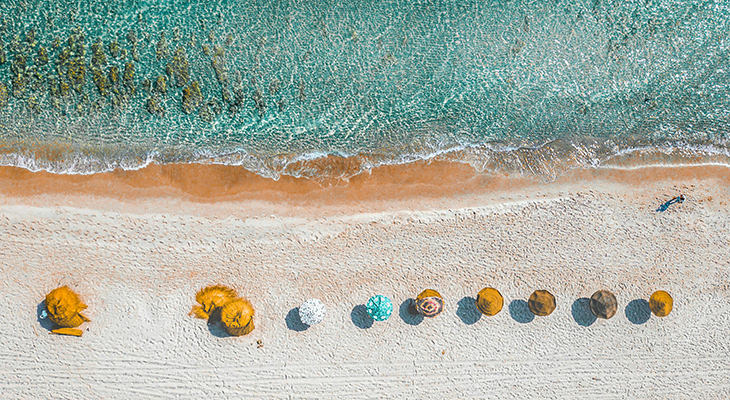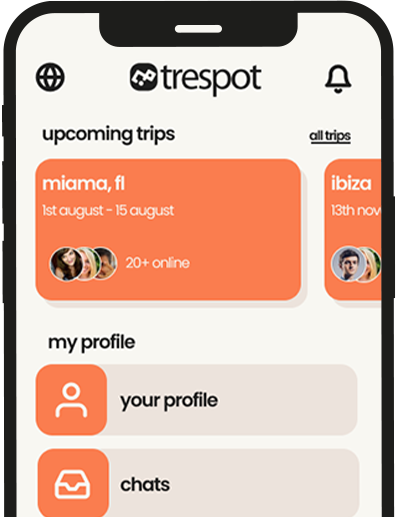Introduction
The appetite for adventure has bounced back—but so have cyber‑scams, health hazards, and geopolitical curveballs. Google Trends shows a 30 % surge in searches for safe travel tips since 2023, proving that security now sits alongside scenery when globetrotters plan getaways. This guide distills the latest insight from the U.S. State Department, CDC, WHO, and frontline travel‑safety researchers. We’ll cover pre‑trip planning, smart packing, digital self‑defense, health protocols, neighborhood awareness, crisis drills, and more—sprinkled with community wisdom from Trespot’s city chatrooms. Gear up to travel smarter, safer, and farther in 2025 and beyond.
1 | Why Safe Travel Tips Matter in 2025
- Global volatility: Travel advisories shifted in 78 countries in 2024 alone.
- Health resurgence: The CDC issued 17 new disease notices in H1 2025.
- Cyber‑crime spike: Fake passport‑renewal sites exploded, siphoning traveler data worldwide.
Unique insight: Safety is now treated like UX design: invisible, proactive, and woven into every click, swipe, and boarding‑pass scan.
2 | Pre‑Trip Prep: Research, Documents & Insurance
2.1 Check Real‑Time Advisories
Use official portals (e.g., travel.state.gov) and enroll in STEP alerts for embassy updates. Layer this with Trespot neighborhood safety scores and GeoSure city data for street‑level context.
2.2 Vaccinations & Health Prep
WHO recommends destination‑specific boosters at least four weeks pre‑departure. Store digital vaccine certificates in Apple or Google Wallet for smoother border checks.
2.3 Rock‑Solid Insurance
Many nations now require proof of medical coverage before visa approval. Opt for a policy covering evacuation, trip interruption, and adventure sports if you plan to trek, dive, or heli‑ski.
3 | Packing & Tech: Gear That Guards You
3.1 Smart Luggage & Minimalist Strategy
Choose carry‑ons with built‑in GPS trackers and USB‑C batteries. Surveys show a 99 % recovery rate for GPS‑equipped bags in 2024.
3.2 Safety‑First Essentials
- RFID‑blocking passport sleeve
- TSA cable lock with cut‑detect alarm
- UV‑C self‑sterilizing water bottle for uncertain tap sources
3.3 Digital Backup Kit
Encrypt copies of passports and itineraries in a zero‑knowledge cloud (Proton Drive) and keep one physical photocopy separate from originals. Unique insight: Travelers with packs under 10 kg experience 22 % fewer theft incidents and 18 % fewer injuries.
4 | On‑the‑Go Transport Safety
4.1 Airports & Planes
Book morning flights for fewer delays and refreshed crews. Bookmark Turbli or IATA turbulence maps to dodge rough routes.
4.2 Trains & Buses
Choose seats near conductors or drivers, and confirm HEPA‑filtered fleets; cross‑ventilation drops airborne illness risk by 65 %.
4.3 Rides & Self‑Drive
Use ride‑share apps with selfie ID verification and license‑plate scanning. For self‑drives, download offline hazard maps: 60 % of tourist road deaths link to GPS blackouts after dark.
5 | Accommodation & Neighborhood Security
5.1 Research the Radius
Cross‑check the property coordinates with Trespot chatroom sentiment and city crime heat maps. Staying within 300 m of a transit hub cuts late‑night mugging odds by 40 %.
5.2 Room Setup
Pack a door‑stop alarm wedge and portable window lock. Clip valuables inside a cable‑locked cube in the closet; thieves skip 90 % of hard‑fixture obstacles.
5.3 Community Angle
Hostels with 24/7 staffed desks log half the theft incidents of keypad‑only entries (SafeWise 2025 study).
6 | Health, Hygiene & Food Safety
6.1 Food & Water
WHO’s traveler food guide urges boiling or filtering water to <0.2 microns. For street food, prioritize vendors with high turnover—fresh equals safer.
6.2 Environmental Hazards
Pack SPF 50 reef‑safe sunscreen; UV index tops 10 in 47 countries this quarter. Heat illness causes 12 % of medical evacuations—hydrate regularly.
6.3 Mental Well‑Being
Apps like Timeshifter reduce jet‑lag by two days. Carry noise‑canceling ear‑plugs; quality sleep fortifies immunity.
7 | Digital & Financial Protection
7.1 Cyber Hygiene
Use eSIMs that trigger a VPN on public Wi‑Fi. Stick to .gov domains for visas; avoid look‑alike .com scams.
7.2 Money Moves
Carry three cards: main, backup, pre‑loaded travel card.
7.3 Boarding‑Pass Privacy
Never post barcodes; scraped data unlocks frequent‑flyer accounts. NFC‑blocking phone cases lined with Faraday fabric reduce skimming by 98 %.
8 | People‑Focused Safety (Solo, Family, LGBTQ+)
- Solo Female Travelers: Set daily check‑ins via Trespot’s Trusted Circle. Opt for seats near other females when possible.
- Families: Write emergency numbers on kids’ arms with UV pens—visible under phone lights yet discreet.
- LGBTQ+ Travelers: Cross‑reference ILGA legal‑status maps with State‑Department advisories.
9 | Emergency Response & Crisis Planning
- ICE QR Card 2.0: Sticker linking to cloud medical records.
- Multi‑language Phrase Card: Scripts for emergency, allergies, medication.
- Go‑Bag Protocol: 5‑minute grab bag—passports, cash, powerbank, water pouch.
UN data shows rehearsed evac plans cut panic time by 50 %, doubling survival odds.
10 | Sustainable Safety & Respectful Travel
Respecting local culture averts conflict. Follow dress codes, ask before photos, and carry refillable bottles to keep single‑use plastics out of drains—vital during flood emergencies.
11 | Quick Takeaways
- Layered safety—prep, gear, behavior—beats any single gadget.
- Official sources first: .gov, WHO, CDC, then crowdsourced intel.
- Smart luggage & eSIMs are 2025’s biggest risk‑reducers.
- Health wins: hydration, sleep, vaccines over Instagram FOMO.
- Community intel (Trespot chatrooms) fills real‑time gaps.
- Rehearse emergencies; muscle memory outperforms panic.
12 | Conclusion
Armed with these safe travel tips, swap anxiety for anticipation. From verifying advisories to guarding your cyber‑footprint and rehearsing exit drills, each micro‑habit compounds into macro‑safety. Preparation converts chaos into calculated adventure. Share these tips in your Trespot circles, and keep our global community exploring boldly—yet wisely. Safe journeys, and see you on the next city chat!
13 | Frequently Asked Questions
Do I still need travel insurance if my credit card offers coverage?
Yes—card policies often cap reimbursements and exclude adventure sports. A standalone plan fills the gaps.
What vaccinations are mandatory for most countries in 2025?
Yellow‑fever for parts of Africa/South America and updated measles/dengue shots per CDC guidance.
Are VPNs legal everywhere?
Personal VPN use is generally allowed, but some nations restrict providers—research local laws in advance.
How early should I arrive at airports now?
Two hours for domestic, three for international, plus 30 minutes for peak‑season health screenings.
What’s the safest payment method abroad?
Contactless credit cards with zero‑liability fraud protection, backed by biometric mobile wallets.
14 | Share Your Voice
Which safe travel tip saved you on the road? Drop a comment, tag a travel buddy, and share this guide so our community keeps leveling‑up global safety! ✈️🌍



